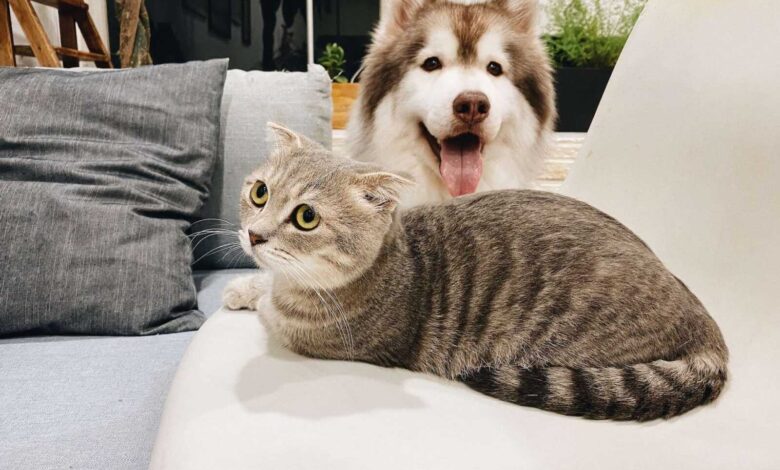The Vital Role of Patience and Consistency in Effective Pet Training

In the world of pet training, two fundamental elements stand out as key ingredients for success: patience and consistency. Whether you’re working with dogs, cats, or other pets, understanding the significance of these traits and implementing them correctly can make all the difference in achieving your training goals. In this comprehensive guide, we’ll explore how patience and consistency play pivotal roles in pet training and provide you with practical tips and insights for mastering these skills.
Understanding the Significance
The Backbone of Successful Pet Training
Patience and consistency serve as the backbone of any successful pet training regimen. These two principles are interdependent, each reinforcing the other. Let’s delve into why they are so crucial:
1. Building Trust and Confidence: Patience in pet training allows your furry friend to build trust and confidence in you as their trainer. It creates an environment where they feel safe to learn and make mistakes without fear of punishment.
2. Clear Communication: Consistency, on the other hand, provides clear and predictable communication to your pet. When they understand that specific behaviors lead to certain outcomes every time, they’re more likely to grasp what you’re trying to teach.
3. Reinforcing Positive Habits: Consistency is key when reinforcing positive habits. Pets thrive on routine and repetition, and consistent training helps them understand what’s expected of them.
4. Effective Problem Solving: Patience comes into play when dealing with setbacks or challenges during training. Instead of becoming frustrated, a patient trainer is more likely to approach problems with a calm and problem-solving mindset.
5. Strengthening the Human-pet Bond: Building a strong bond between you and your pet is one of the most rewarding aspects of training. Both patience and consistency contribute significantly to this bond, creating a deep and lasting connection.
The Benefits of Patience and Consistency
Embracing patience and consistency in pet training yields numerous benefits:
1. Improved Learning: Pets learn more effectively when training is carried out in a patient and consistent manner. They can better understand the cues and commands you provide.
2. Reduced Stress: A patient and consistent approach reduces stress for both you and your pet. Training becomes a positive and enjoyable experience rather than a source of anxiety.
3. Faster Progress: While pet training requires time and effort, a patient and consistent approach often results in quicker progress. Pets are more likely to grasp concepts and behaviors when they receive clear and consistent guidance.
4. Better Behavior: Over time, patient and consistent training helps shape better behavior in your pet. Undesirable habits are gradually replaced with desirable ones.
5. Enhanced Communication: Your pet becomes more attuned to your signals and expectations, leading to improved communication between you and your furry companion.
Practical Tips for Being Patient and Consistent
How to Cultivate Patience
- Set Realistic Expectations: Understand that learning takes time, and your pet may not get it right away. Be patient with their progress.
- Stay Calm: Keep your emotions in check during training sessions. Pets can pick up on your frustration or impatience, which may hinder their learning.
- Take Breaks: If you or your pet become frustrated, it’s okay to take a short break. This can help both of you reset and return to training with a fresh perspective.
- Celebrate Small Wins: Acknowledge and reward even the smallest achievements. This positive reinforcement encourages your pet’s learning.
- Practice Regularly: Consistent practice helps build patience over time. The more you engage in training, the more patient you’ll become.
How to Maintain Consistency
- Use Clear and Consistent Commands: Ensure that everyone involved in training uses the same commands and signals consistently.
- Stick to a Routine: Create a training schedule and stick to it. Consistency in timing reinforces your pet’s understanding of what’s expected.
- Reward and Correct Consistently: Reinforce good behavior consistently with rewards and address undesirable behavior promptly and consistently.
- Avoid Mixed Signals: Don’t confuse your pet by allowing a behavior one day and correcting it the next. Consistency is key in setting expectations.
- Stay Informed: Educate yourself about effective training methods and stay informed about your pet’s breed or species-specific needs.
Overcoming Challenges
Challenges to Patience and Consistency
While patience and consistency are essential in pet training, challenges can arise:
1. Frustration: It’s natural to feel frustrated at times, especially if progress is slower than expected. Remember that patience is a skill that can be developed with practice.
2. Time Constraints: Busy schedules can make it challenging to be consistent with training sessions. Prioritize short, regular sessions to maintain consistency.
3. Setbacks: Pets may have setbacks or regressions in their training. These moments require an extra dose of patience and a commitment to consistency.
4. Individual Differences: Each pet is unique, and what works for one may not work for another. Adapt your training methods while staying consistent with your chosen approach.
5. Seeking Professional Help: If you find it challenging to maintain patience and consistency or face complex training issues, consider seeking the guidance of a professional trainer.
Pet Training
In the world of pet training, patience and consistency are your most valuable tools. They lay the foundation for a strong bond, effective communication, and the successful development of desired behaviors. By embracing these principles, you’ll not only be a more effective trainer but also provide your pet with a positive and enriching training experience. Remember, practice makes perfect, and over time, both you and your pet will reap the rewards of your patient and consistent efforts.







